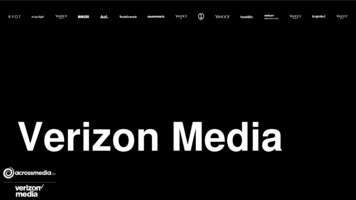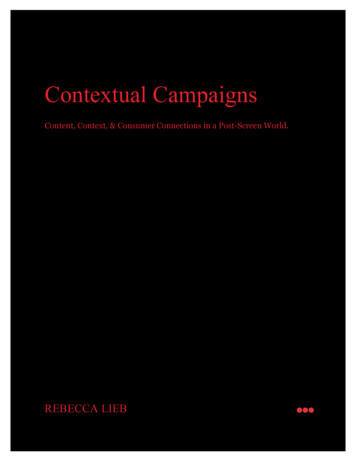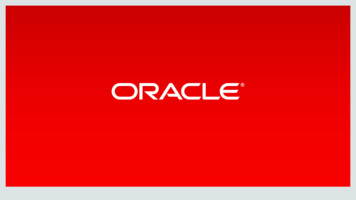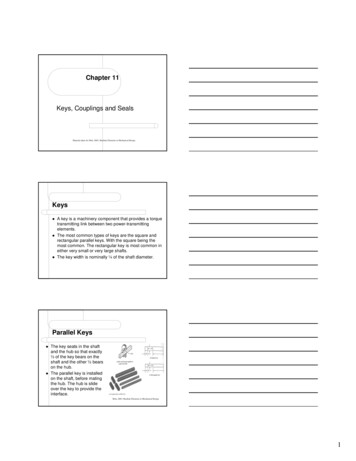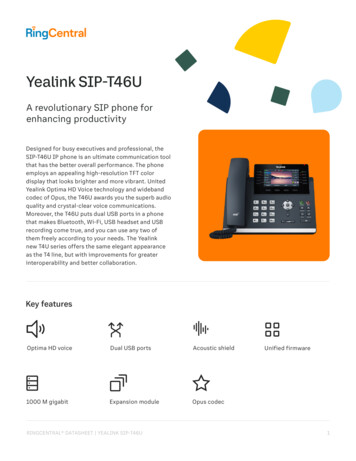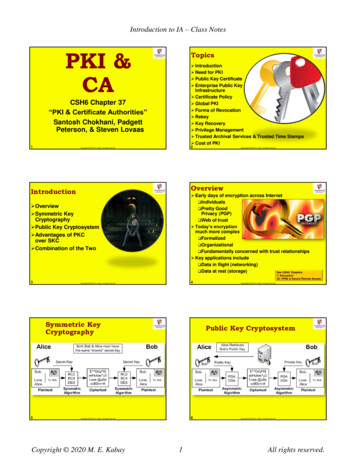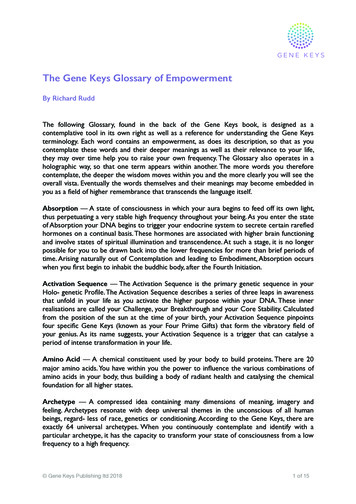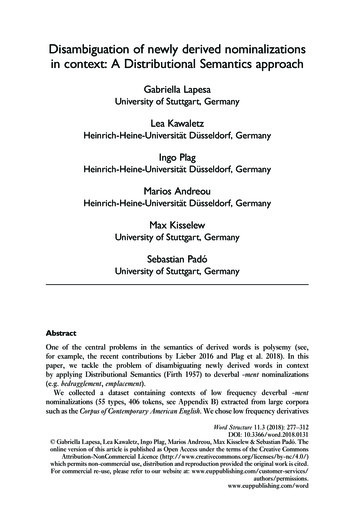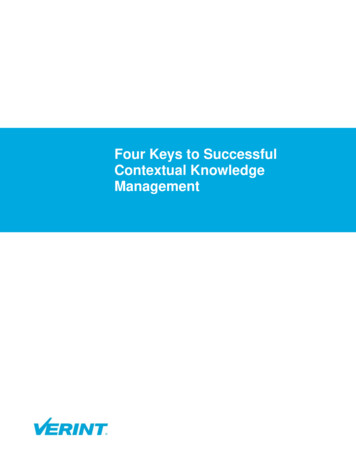
Transcription
Four Keys to SuccessfulContextual KnowledgeManagement
Table of ContentsIntroduction . 1Real Results . 1Contextual Filters . 2Suggested Knowledge . 2Personalized Content . 2Omnichannel Content . 2Conclusion . 2Unauthorized use, duplication, or modification of this document in whole or in part without the written consent of Verint Systems Inc. is strictlyprohibited. By providing this document, Verint Systems Inc. is not making any representations regarding the correctness or completeness ofits contents and reserves the right to alter this document at any time without notice. Features listed in this document are subject to change.Contact your Verint representative for current product features and specifications. All marks referenced herein with the or TM symbol areregistered trademarks or trademarks of Verint Systems Inc. or its subsidiaries. All rights reserved. All other marks are trademarks of theirrespective owners. 2015 Verint Systems Inc. All rights reserved worldwide.
IntroductionImproving customer satisfaction, while containing costs, is the ultimate success for almost everycustomer service organization. In a recent third-party survey of Verint customers, 96 percent ofrespondents were looking to improve customer satisfaction, while 84 percent were also lookingto reduce costs. So how can organizations achieve this lofty goal? A Gartner report1 found thatcontextual knowledge management offers critical benefits for gains in satisfaction andproductivity.According to the study, “Poor KM is a dual curse, causing poor customer satisfaction and a dragon productivity.”2Each year, the amount of information available to customers and employees growsexponentially, while at the same time, customer expectations for fast service rise. Employeesmust suffer through endless searches and scans of thousands of documents. Call times grow,answers are inconsistent and frustration mounts. When customers try to help themselves, theresults are no better. Web searches may bring thousands of results or none at all. Without anyother option, customers are forced to pick up the phone.Real ResultsContextual knowledge management helps solve this dilemma by bringing the right information to theemployee or customer at the right time. When information is easy to find, resolution times drop andsatisfaction skyrockets. According to the report, “during 4Q13 and 1Q14, Gartner’s work with its customersupport operations showed strong TCO on KM projects that included: 35 percent reduction in the time that it takes to train a new customer support representative 40 percent reduction in inbound emails due to easy access to information 25 percent head count shift away from low-value calls due to self-service knowledge search 40 percent reduction in talk time in a support center 8 percent reduction in support calls, and 18-percent reduction in support costs, by supporting3knowledge creation in online customer communities”At Verint, we have also seen customers achieve outstanding results. One of the largest mobile phoneretailers in the world found similar results after implementing Verint Knowledge Management. Verinthelped this company achieve the following: First-time fix rate of 89 percent Productivity improvement of 39 percent Reduced handling time Reduced staff attrition rates Improved Net Promoter Score Can your organization achieve results similar to this? It’s possible, with the help of the correct knowledgemanagement system. Companies looking to achieve similar results should look for a knowledgePage 1
management system that provides the following four critical features to take advantage of customercontext.Contextual FiltersThe amount of data accessible to employees and customers is growing exponentially. Contextual filtersuse information about the customer, such as products, location or account type, to automatically filter theavailable content to a fraction of the available data. Searching through a restricted result set can have abig impact on the time needed to find an answer.Suggested KnowledgeIn many cases, understanding the context of the customer can provide enough information to presentsuggested knowledge articles without the need to search at all. For instance, if a travel customer contactsthe call center during a time that they should already be travelling on a flight, the contextual knowledgebase can assume the customer needs re-booking information. If a fraud alert was issued on a customer’saccount, the agent should immediately have access to this information when the customer contactscustomer service. By proactively presenting relevant knowledge, resolution times can drop dramaticallyand the customer experience can be greatly improved.Personalized ContentIndividual knowledge articles can also leverage context to provide personalized information. For example,an article about wireless Internet fees at a hotel can show a different price for platinum-level guests thanordinary guests. Rather than maintaining two separate articles for these two customer types, a contextualknowledge management system should allow you to entitle reusable snippets of text within the article.This capability can not only provide a much more personalized experience, but also can drasticallyreduce the total number of articles you need to maintain and, accordingly, the number of places to makeedits should your policies change.Omnichannel ContentFinally, a knowledge management system should provide consistent answers across all channels ofcommunication. Whether in the call center or on the web, across phone, email, live chat, mobile or socialchannels, your customers need consistent information. A contextual knowledge management applicationcan separate the text from the delivery channel, allowing you to format content differently across channelsas needed. In this way, you will again reduce your maintenance efforts by maintaining a single knowledgearticle for all channels.ConclusionAs you begin to examine your customer service processes to improve satisfaction while containing costs,it is important to remember that technology alone will not produce your desired results. You must alsomake the necessary changes to your people and processes to ensure success. Knowledge is an everchanging entity, so you must create a culture that supports your initiatives beginning at the very top ofyour organization.123Gartner, Knowledge Management will Transform CRM Customer Service, Michael Maoz, March 6, 2014Gartner, Knowledge Management will Transform CRM Customer Service, Michael Maoz, March 6, 2014Gartner, Knowledge Management will Transform CRM Customer Service, Michael Maoz, March 6, 2014Page 2
Verint. Powering Actionable Intelligence. Verint (NASDAQ: VRNT) is a global leader in Actionable Intelligence solutions. Actionable Intelligenceis a necessity in a dynamic world of massive information growth because it empowers organizations withcrucial insights and enables decision makers to anticipate, respond and take action. Verint ActionableIntelligence solutions help organizations address three important challenges: customer engagementoptimization; security intelligence; and fraud, risk, and compliance. Today, more than 10,000organizations in over 180 countries, including over 80 percent of the Fortune 100, use Verint solutions toimprove enterprise performance and make the world a safer place. Learn more at www.verint.com.Page 3
A Gartner report1 found that contextual knowledge management offers critical benefits for gains in satisfaction and . Whether in the call center or on the web, across phone, email, live chat, mobile or social channels, your customers need consistent information. A contextual knowledge management application . Intelligence solutions help .
